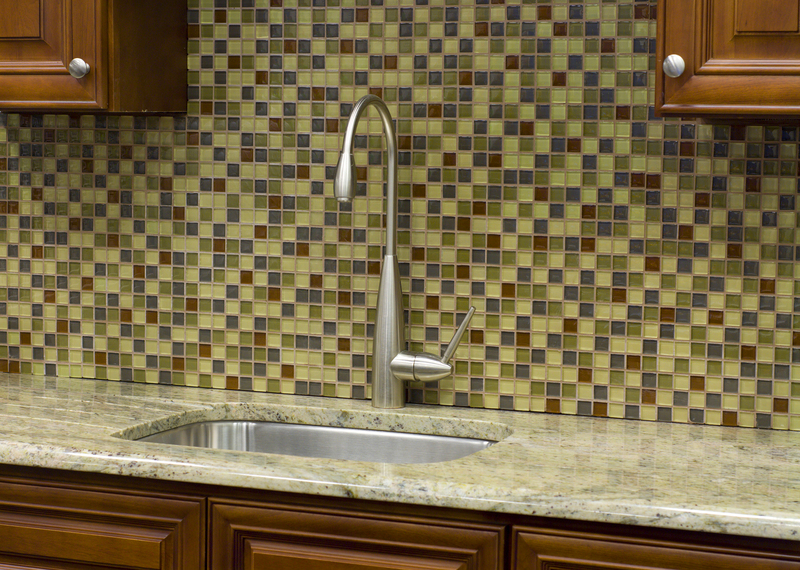Tenants' Handbook: Navigating End of Tenancy Cleaning
Posted on 14/08/2025
Tenants' Handbook: Navigating End of Tenancy Cleaning
Moving out of a rented property is always a significant event. With so many details to remember, one critical task that stands between you and your full deposit is the end of tenancy cleaning. Understanding exactly what is expected and how to navigate the process can be the key to a smooth transition -- and to safeguarding your hard-earned money.
Why is End of Tenancy Cleaning Important?
Landlords and letting agents typically require a property to be cleaned thoroughly before a tenant vacates. A proper end of lease cleaning not only fulfills your rental agreement but also significantly impacts whether you receive your security deposit back in full.
- Restores property to move-in condition for the next tenant.
- Meets legal and contractual obligations, protecting you from disputes.
- Helps avoid additional cleaning fees imposed by landlords or agencies.

Understanding Your Tenancy Agreement
Before you start scrubbing, review your rental contract. Most leases specify the standard of cleanliness expected at move-out. Some may even define it as "professional cleaning" or set out particular requirements.
Key Points to Look For in Your Contract:
- Definitions of cleanliness (e.g., "domestic standard," "professional standard")
- Requirements for professional receipts or invoices
- Areas requiring special attention, such as ovens, appliances, or carpets
- Pet agreements and specific cleaning stipulations
- Rules about garden or outdoor maintenance
Tip: If the wording is ambiguous, contact your landlord or letting agent for clarification to avoid misunderstandings.
DIY vs. Professional End of Tenancy Cleaning
One of the first decisions to make is whether to tackle the cleaning yourself or to hire professionals. Each approach has its pros and cons:
Advantages of DIY Cleaning:
- Cost-effective: Save money by doing it yourself.
- Control: Address the specific areas you know are an issue.
- Flexibility: Clean according to your moving schedule.
Risks of DIY Cleaning:
- Time-consuming and physically demanding
- Potential to overlook requirements, risking deposit deductions
- May lack the equipment or expertise for tough stains or odors
Advantages of Hiring Professional End of Tenancy Cleaners:
- Guarantees high cleaning standards and often comes with an assurance or receipt for your landlord
- Saves you time and effort (ideal during a busy move)
- Experienced cleaners not likely to miss details that could cost you
Risks of Professional Cleaning:
- More expensive than doing it yourself
- Scheduling: May require booking in advance
- Needs you to vet companies for trustworthiness and quality
Ultimately, the choice depends on your budget, time, energy, and the shape of your rented property.
Preparing for End of Tenancy Cleaning
Plan Ahead
- Book professional cleaners early if you intend to use them -- slots can fill quickly, especially during popular moving times.
- Start packing non-essentials in advance to give yourself more space and make cleaning easier.
- Notify your landlord or letting agent of your intended move-out date well ahead of time.
Gather Your Supplies
If you are cleaning the property yourself, make sure you have all the necessary supplies, including:
- All-purpose cleaners (including kitchen and bathroom-specific solutions)
- Glass and mirror cleaners
- Oven and hob degreasers
- Carpet and upholstery cleaners
- Mops, buckets, cloths, dusters, vacuum cleaner, and bin bags
- Protective gloves, masks, and appropriate clothing
Step-by-Step Guide to Thorough End of Tenancy Cleaning
To help you stay organized -- and to ensure nothing important is missed -- follow this detailed room-by-room cleaning checklist:
1. Kitchen
- Clean all cupboards and drawers inside and out.
- Scrub worktops and backsplashes.
- Deep clean the oven: remove racks and soak, clean glass doors and knobs.
- Clean the hob, extractor fan, and microwave.
- Defrost and clean the refrigerator and freezer. Leave doors open to prevent mold.
- Wipe down all appliances: kettle, toaster, coffee machine, washing machine, dishwasher.
- Sanitize sinks and taps; clear limescale.
- Empty all bins and clean thoroughly.
2. Bathrooms
- Descale and sanitize toilets, sinks, taps, showers, and baths.
- Polish mirrors and glass surfaces.
- Wipe down tiles -- pay attention to grout.
- Clean all cupboards, shelves, and light fixtures.
- Wash or replace shower curtains, if needed.
3. Bedrooms and Living Areas
- Dust and wipe all surfaces, shelves, and skirting boards.
- Clean the interiors and exteriors of wardrobes, drawers, and cupboards.
- Spot clean or professionally clean carpets and rugs if required by your contract.
- Wipe windowsills, frames, and window glass (inside; outside if specified).
- Remove all stickers, nails, or hooks that were not part of the original fixtures.
4. Hallways and Entrances
- Dust banisters, railings, and light fixtures.
- Clean and polish any entry door glass.
- Vacuum or sweep and mop flooring.
5. General Details (Applicable Throughout the Property)
- Remove all rubbish and personal belongings.
- Wipe doors, handles, electrical sockets, and light switches.
- Clean radiators and heating vents.
- Dust and check behind and under furniture (if furnished).
- Ensure light bulbs are working or replaced.
Commonly Overlooked Areas During the End of Tenancy Cleaning
According to industry experts, these spots are most frequently missed and may cause landlords to claim deductions:
- Inside the oven and behind/under appliances
- Limescale on taps and showerheads
- Extractor fans and filters
- Behind radiators and furniture
- Window tracks and sills
- Skirting boards and door frames
- Ceiling cobwebs and light fixtures
- Outdoor spaces, balconies, and gardens
How to Document Your Cleaning
Once you've completed the cleaning, thoroughly document your work:
- Take dated photographs of each room from several angles.
- Keep copies of receipts for professional cleaning or products purchased.
- Ask your landlord or letting agent to inspect the property before handing over keys.
This protects you if disputes arise about cleanliness or damage at the end of tenancy.
Dealing with Deposit Disputes Related to Cleaning
Despite your best efforts, you may encounter disputes related to end of lease cleaning. Here's what to do:
- Refer to your inventory report and tenancy agreement.
- Check photographic evidence and receipts for cleaning.
- Communicate formally and promptly with your landlord/agent.
- Use a government-authorized tenancy deposit scheme (TDS) dispute service if required.
End of Tenancy Cleaning: Frequently Asked Questions
Is Professional End of Tenancy Cleaning Mandatory?
Not always. Some contracts require professional cleaning, while others simply expect a high standard of cleanliness. Always check your lease to avoid misunderstandings.
What Happens If I Don't Clean Properly Before Moving Out?
Landlords can use some or all of your security deposit to pay for cleaning required to restore the property to its original condition. Disputes can delay deposit returns.
How Long Does End of Tenancy Cleaning Take?
It depends on the size and condition of the property. A small flat might take 4-6 hours, while a large house could require an entire day or more, especially for a thorough, move out cleaning.
Can I Be Present During Professional Cleaning?
Most companies allow tenants to be present. Being there ensures you can answer questions or point out problem areas.
Does the Cleaning Include Carpets and Upholstery?
This depends on your contract. Some stipulate that professional carpet and upholstery cleaning is required, especially if you had pets.
Bonus Tips for Hassle-Free End of Lease Cleaning
- Address repairs before cleaning (e.g., fill small holes, fix scuffs, replace damaged items).
- Start cleaning early -- don't leave everything to the last minute.
- Recruit friends or family if tackling cleaning yourself.
- Use checklists to track progress and avoid missing details.
- Return keys on time to avoid extra charges.

Checklist: The Ultimate End of Tenancy Cleaning List
- Remove all personal items and rubbish.
- Vacuum and mop all floors.
- Dust all surfaces, shelves, skirting boards, and furniture.
- Clean kitchen appliances, counters, and sinks.
- Deep clean oven, hob, and extractor fan.
- Clean inside cupboards, drawers, and wardrobes.
- Sanitize bathroom: toilet, sink, bath, shower, and tiles.
- Polish mirrors and windows (inside).
- Check all light fixtures, sockets, and switches.
- Remove marks from walls if possible.
- Launder or replace curtains and blinds as needed.
- Clean outdoor spaces and remove rubbish.
- Document everything with photos.
Download this checklist or print it so you don't forget vital tasks!
Conclusion: Secure Your Deposit with Expert Tenancy Cleaning
End of tenancy cleaning is about more than just leaving your old home spotless -- it's about meeting your obligations, avoiding disputes, and ensuring you get your full deposit back. Whether you opt for a professional move out cleaning service or tackle the task yourself, the key is to work methodically, document your efforts, and leave no detail overlooked.
With the right approach, you can transition to your new home smoothly and with peace of mind.
Ready to move? Use this Tenants' Handbook as your go-to guide for hassle-free end of tenancy cleaning every time you relocate!



